Finishing the rose removal
>> Wednesday, October 22, 2014 –
planting
Recently I started removing a climbing rose that was infected by Rose Rosette Disease. At the time I just pruned the poor thing to the ground, saying that I'd remove the roots later.
Part of my delay was that I wasn't sure what plant to put here in its place. This is the type of thing I might have thought about over the winter a few years ago, carefully weighing the pros and cons of every perennial vine that would grow in my climate. Not now though -- I don't have the patience for that anymore. Now I just weighed a few choices, saw a plant I knew I wanted to grow, ordered it, and dug in.
There were two surprises when I started digging the roots out. The first was that they came out quite easily, with a lot less effort than expected. I thought the trellis would really hamper my efforts, but it didn't really.
The second surprise was how really nice the soil was here! Apparently I had done a good job when amending the soil in this big planting hole for the rose, as the native soil here is heavy clay, and quite compacted. This stuff was beautiful though!
Look, this was labeled as 'Fourth of July', even though it really didn't look like it:
Since I couldn't plant another rose here as the virus that causes RRD is still present in the soil, I went with a Clematis instead, here shown with my two planting pals Mycorrhizae and Milorganite:
The plant I chose was Clematis tibetana var. vernayi 'Orange Peel', which I bought from Joy Creek Nursery.
 |
| Joy Creek's photo |
I planted a few inches deeper than normal, as is recommended for clematis in colder climates:
And there you go:
It doesn't look like much right now, but I'm planting for the future with this. I hope it does well here!
In order to help protect the base of the plant from browsing herbivores (deer and rabbits, and I saw the woodchuck the other day too) I planted Agastache rupestris in front:
This is the area that now contains mainly deer and rabbit-proof plants: agastache, monarda, artemesia, russian sage, salvias. I'm hoping that they'll make deer avoid this area altogether, but the new agastache will also provide shade for the soil around the clematis, as they prefer cooler soil.
Ah, there was a plant tag in the pot, at least part of one:
The only problem with fall planting in this location is that this plant will receive very little direct sun. Due to the winter angle of the sun my neighbor's house keeps this bed in shadows for most of the day. (In summer it's blazingly bright and hot though.)
By the way, does anybody know what plant this volunteer is:
I'm thinking a tree of some kind, but don't recognize it. I'm trying to decide if I should rip it out or pot it up -- or maybe it can stay here? It adds nice contrast to the fine foliage around it.
The rose is now a fading memory -- the future is Clematis tibetana var. vernayi 'Orange Peel'!
.
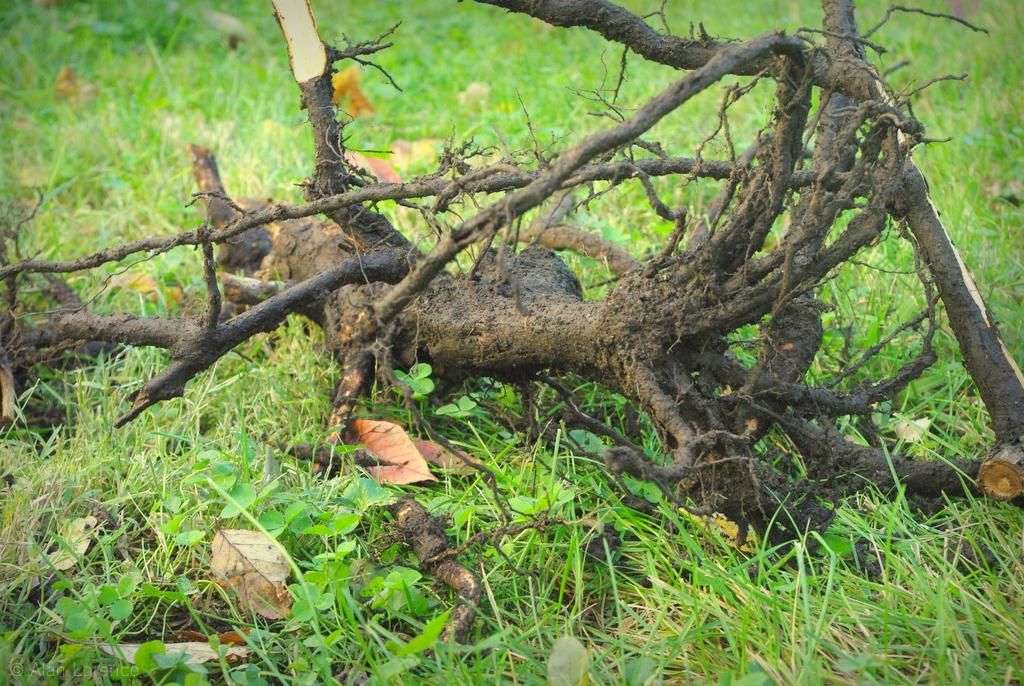
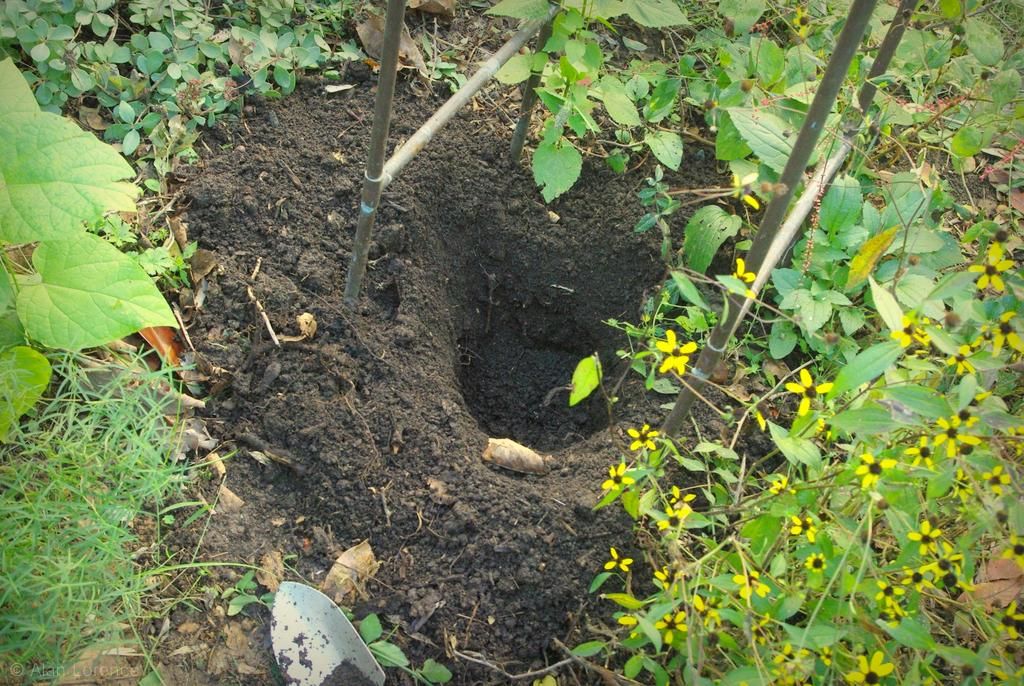
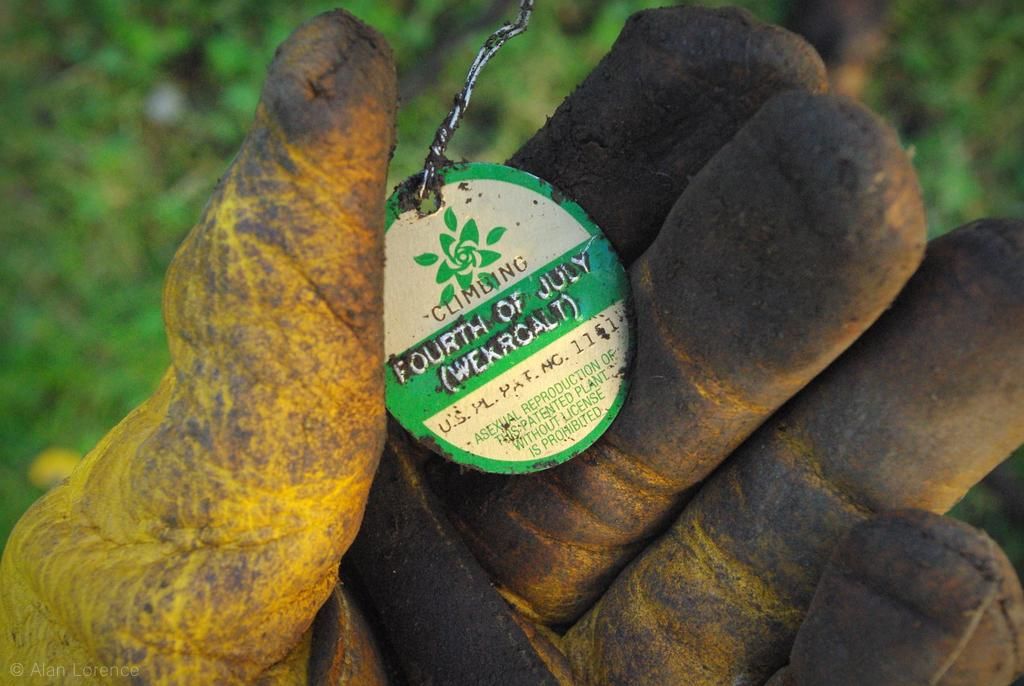
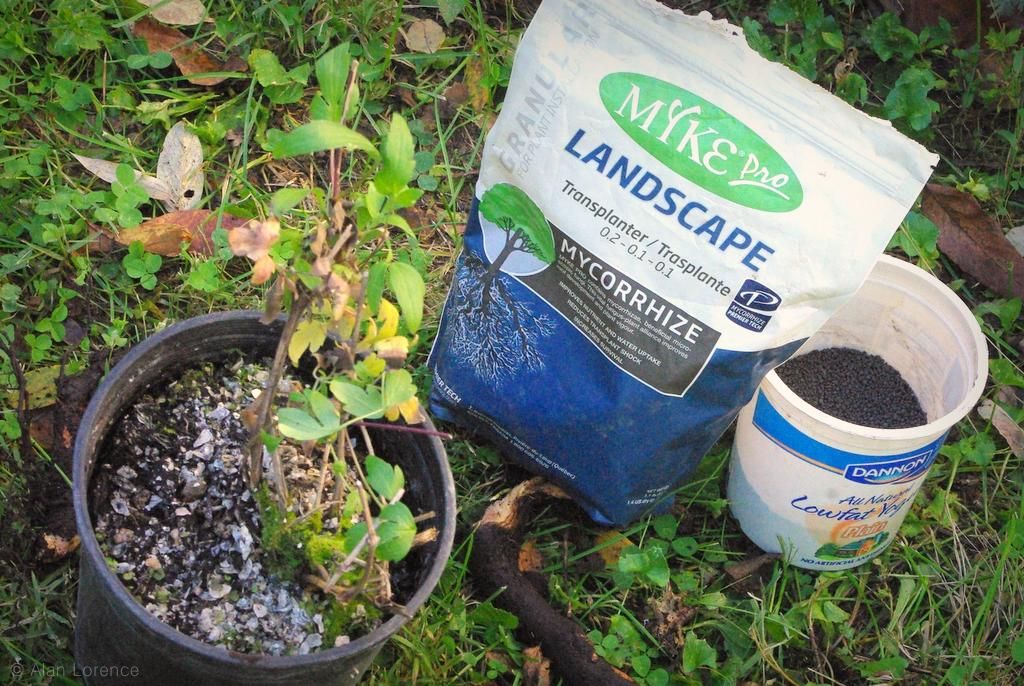
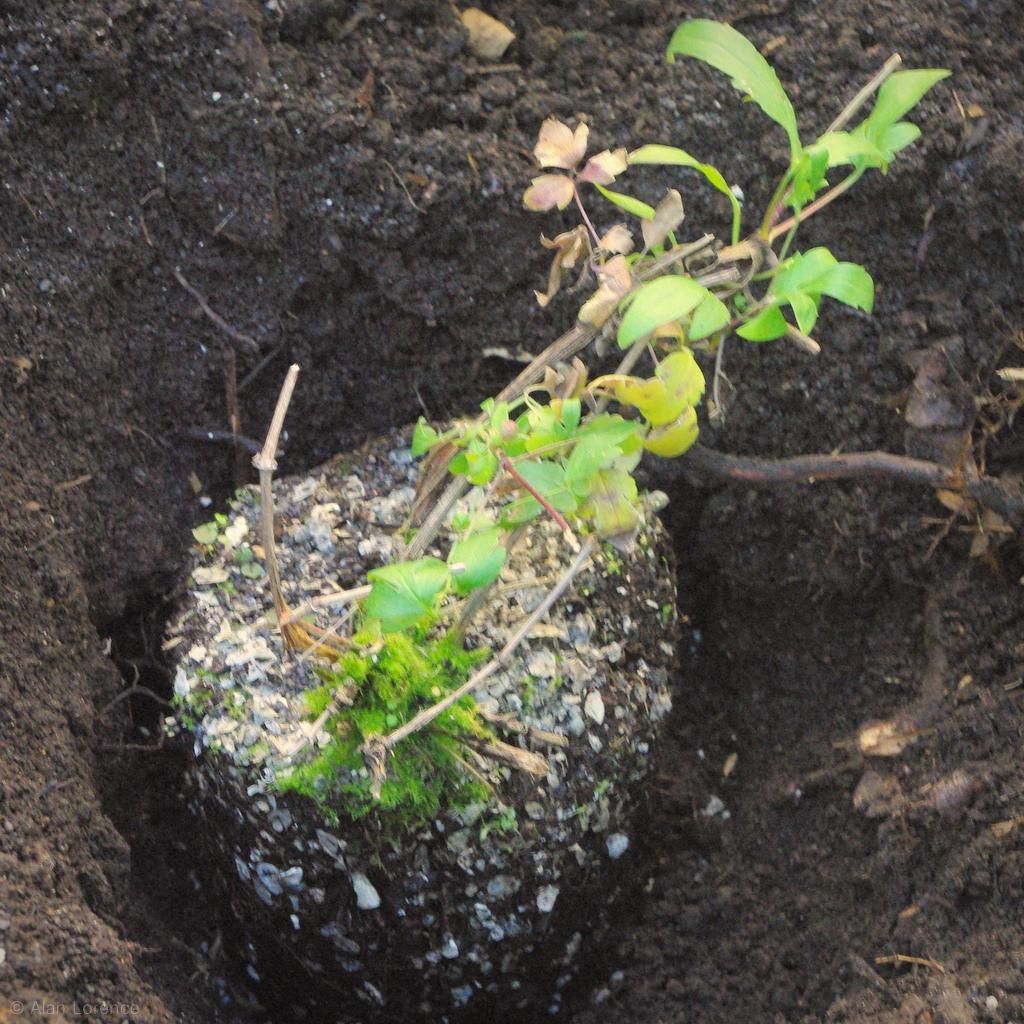


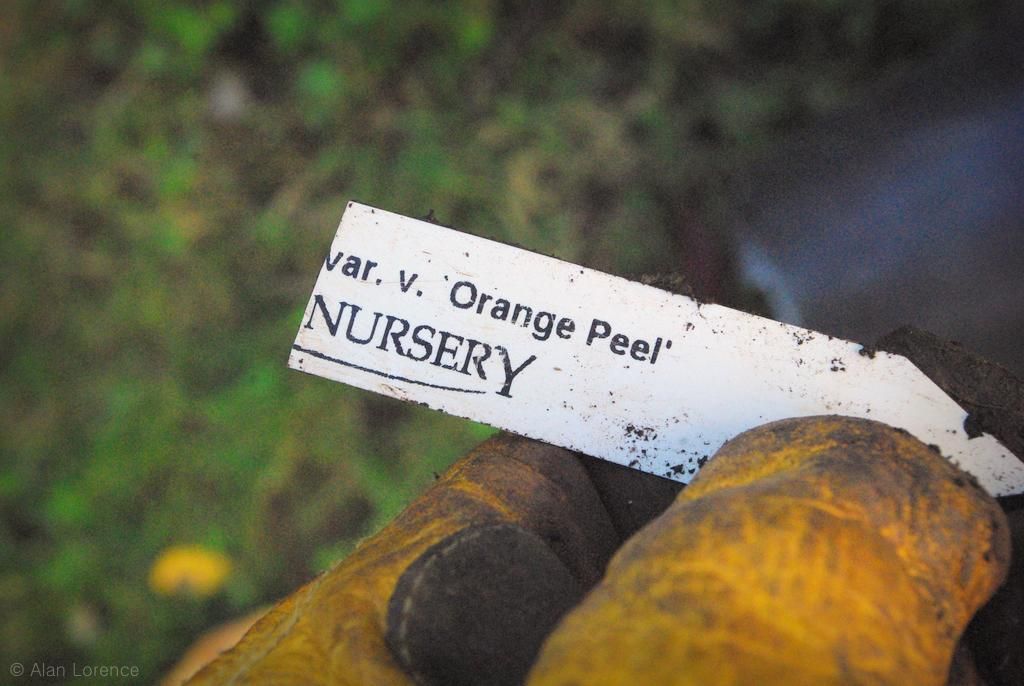
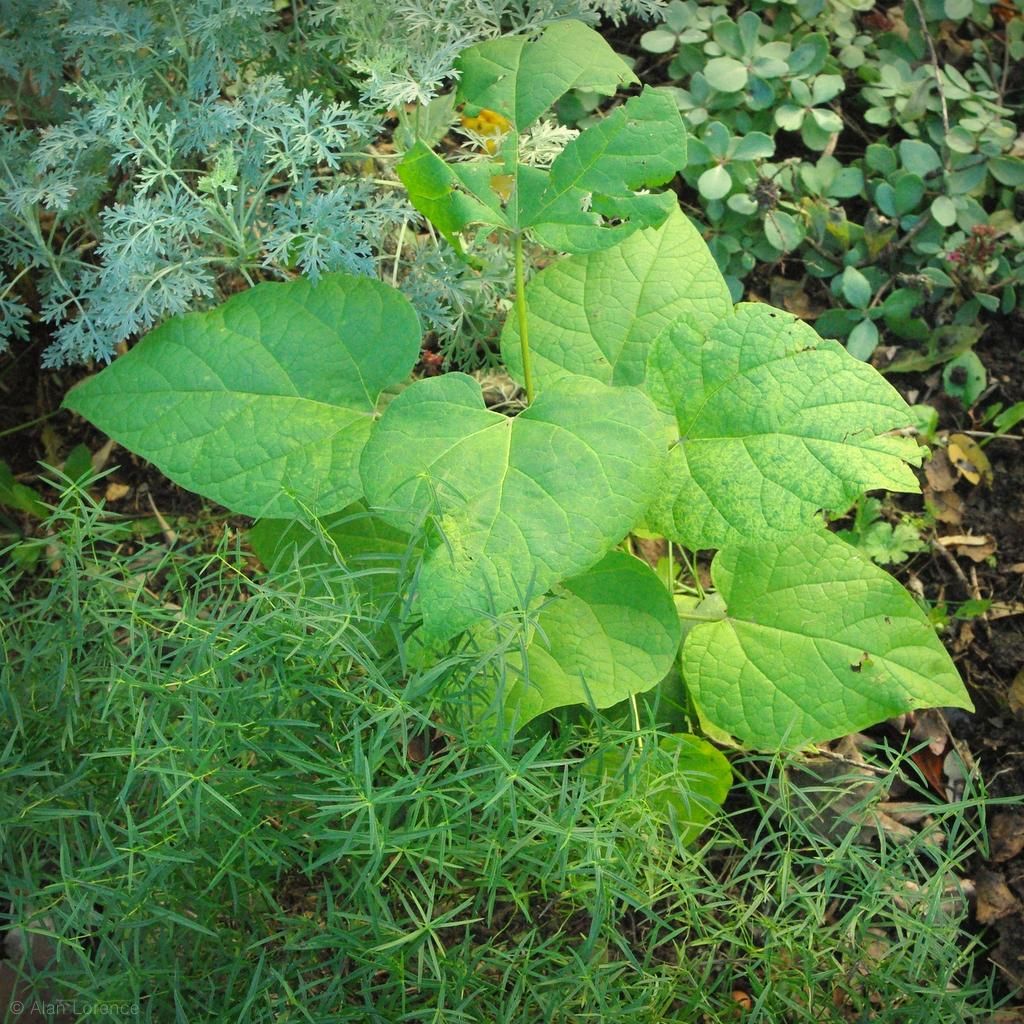




Glad to hear that the job of removing the roots turned out to be much easier than you thought. And that Clematis will romp away nicely next year!
Hmmm not sure of the mystery plant, but I too have 'Orange Peel' also from Joy Creek. It's about four years old, gets a good amount of shade and still blooms up top profusely in early summer and again in early fall. It gets a lot of foliage and out of control, but fun.
Tamara: We're much different climates so will be interesting to see how our plants compare over the next couple of years. I want this thing going crazy! :D
Congrats on the clematis, glad you decided to go for it!
How cool is it that your soil was already well amended and ready for the clematis! I hope it thrives for you and makes you forget about the loss of your rose!
For the seedling, could be a catalpa? Probably not something you want if that's the case. We have a lot in our woods, and I like the flowers there,but wouldn't want one in the garden.
I believe the seedling could be an Empress tree (Paulownia tomentosa). My neighbor from a few doors down has 6' saplings growing in his yard and brought me a leaf to ID for him, and it was MUCH larger.